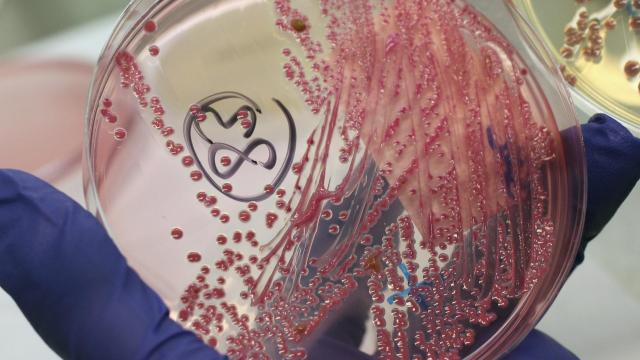Scientists starved different groups of bacteria for over two and a half years, but, despite practically no food, most groups managed to survive just fine. The findings, the researchers argue, indicate that some populations of bacteria are capable of enduring for up to 100,000 years.
It’s no secret that bacteria tend to be tough. Individual bacteria may die here and there, but it’s notoriously difficult to eradicate an entire group of them — a lesson humans have painfully learned with the evolution of antibiotic-resistant bacteria in recent decades. To better understand the durability of bacteria, researchers at Indiana University concocted an experiment that would make the killer from Saw proud.
They collected about 100 different populations of bacteria, representing 21 different taxa (taxa meaning a broad group of life, like a family or genus), and then put them into an “effectively closed system” where they would seemingly have next to no source of food to sustain themselves for 1,000 days. Afterward, they opened the mini-tombs back up.
The populations of bacteria did decline, especially at first, but nearly all made it through the 1,000 days of starvation reasonably intact, the researchers found. Some groups even stabilised as time went on, their population not changing much at all after the first couple hundred of days. Often, the starving bacteria slowed their biological processes down, meaning they needed less energy to live. Some turned into spores, an almost inert form of life that requires incredibly low energy use to maintain. But the bacteria also turned to cannibalism, feeding off their comrades who didn’t survive the initial starvation. This pile of necromass, as the scientists took to calling it, was probably the largest factor in the bacteria’s overall longevity.
While the experiment only lasted for 1,000 days, the team used the rate of decline in these populations during that time to estimate how long they could theoretically survive. They came to the conclusion that the hardiest groups in their study could live as long as the oldest plants and animals known to exist, if they had to hunker down in similarly desolate environments — up to 100,000 years or more. It’s a feat even more impressive considering that bacteria have an incredibly fast reproductive cycle; that speed usually comes with the trade-off of having a short lifespan.
“Although bacteria have the capacity to reproduce on timescales of minutes to hours, we predict that populations can persist for hundreds to thousands of years,” the authors wrote in their study, published this month in PNAS.
There is already real-world evidence of this longevity. Some scientists claim to have found and revived intact bacteria in isolated environments like crystalized salt deposits or permafrost. The claimed age of these ancient bacteria has ranged from 120,000 years to over 200 million years. Last year, Japanese scientists said they resurrected 100-million-old bacteria from deeply buried samples of seabed sediment (an important caveat for all of these discoveries is the possibility of contamination).
“The larger question of how bacteria survive long periods of energy limitation is relevant to understanding chronic infections in humans and other hosts, and is related to how some pathogens tolerate drugs like antibiotics,” said study author Jay Lennon, a biology professor at Indiana University’s College of Arts and Sciences, in a statement from the university.
The researchers say their findings could help inform future research into how these ancient bacteria are pulling off their hibernation and how bacteria in general can survive in the harshest places of the world. And it may prove useful to stopping the relatively few groups of bacteria that make people sick.
